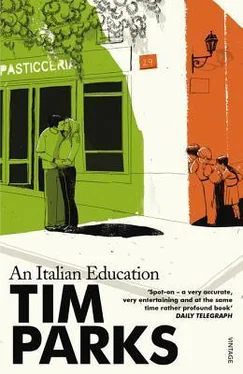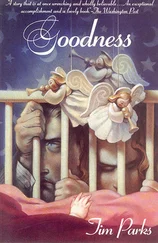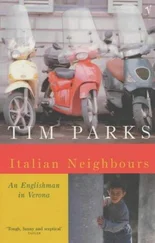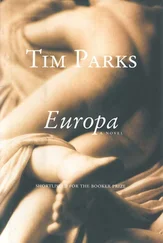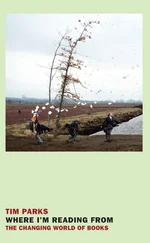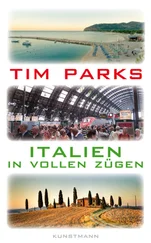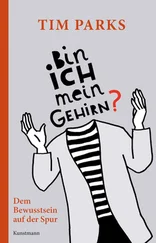Civiltà-à-à-à, questa è civiltà-à-à-à! The children holler and clap. It reminds me of those well-marshalled groups of Chinese children one used to see repeating (presumably) idiocies about the advantages of communism. And the text itself is not far off the kind of thing I occasionally used to tune into on Radio Tirana in the good old days when nearby Albania was still a museum to Stalinism. In fact, the next verse of the poem is going to mention the formation of the New Man, which was always one of Radio Tirana’s obsessions when they weren’t reading reports from The Black Book of Western Imperialism .
But before we get to that, the song is interrupted by a kind of chorus. For this is an extremely modern song/poem/chant with a rap beat, and now in the middle the kids all break off (so that one hears the tinny whine of the tape again). With perfect timing, or almost, they shout: ‘O! O! O! DAN, DAN, DAN, DUBI, DAN DAN!’
This is repeated several times, the ‘dubi’, written here as spelt in the Italian copy of the song, which I later got hold of, being presumably some kind of corruption of Sinatra’s ‘do be do be do…’
‘O! O! O!’ they scream. ‘DAN, DAN, DAN, DUBI DAN DAN!’
The hollered doggerel is actually something of a relief after all those serious thoughts, if only because the children are getting off on it so much. One small girl, a lovely, solid little creature with two pretty blonde pigtails and a rumpled skirt, is going almost crazy in the front row, jumping up and down in manic Muppet fashion and bellowing the refrain. ‘DAN DAN DUBI DAN DAN!!!’
The third verse is a little harder to catch, since half the children are still chanting ‘dubi dan dan’ while the others recite the words. But, I later found that copies of the poem were sensibly provided in a handout:
Ogni bimbo studierà
O! — in completa libertà
O! — solo questo basterà
ed un uomo nuovo si farà-à-à-à-à
The nearest I can get to this is as follows:
Every child will stud-ee
Oh! — in total libert-ee
Oh! — this is what it will take
The new man to cre-e-ate.
In defence of the rather lame half-rhyme — take/create — I can only invite the reader to observe how easy it is to rhyme in Italian (in this case merely by using the same inflected verb ending) and how miserably difficult in English. However, the thinking, if such it can be considered, is clear enough. Encouragingly, when the children repeat the verse after another round of ‘dubi dan dan’s (I should have said that all the verses were repeated), more than one little boy, and I suspect my Michele is amongst them, has begun to replace the words uomo nuovo (new man) with the rather less nebulous concept uovo sodo (hard-boiled egg).
Oh — this is what it will take
The hard-boiled egg to cre-e-ate.
My father-in-law once told me that when as teenagers he and his schoolmates had to sing the many fascist songs at the Saturday morning gym sessions Mussolini instituted, they always changed the words to make them ridiculous, even those who were eager supporters of fascism. It’s as if such songs naturally invited their own parody.
But this is speculation. More to the point is that the headmistress has announced that our revels are now ended. The band wind up the event with a lively tango, a tune one can only assume they usually use at rather different occasions. ‘Thank God for the band,’ Stefano observes as we file into the school for our well-deserved snack. ‘Without them…’
The nice thing about these occasions in Italian schools is that there is wine available. It’s every parent to his or her own child’s classroom, then tuck in: cakes and munchies, Coke and Fanta. And Soave and Custoza and Lugano. Stefano and I very quickly fill up big plastic cups. The walls of the classroom are covered with giant demonstrations of mathematical rules and explanations of where to put the apostrophe when writing Italian, something I should really study a little more carefully myself. A large chart shows how the children are getting on at their various subjects. There are the names of the pupils along the vertical axis, the subjects on the horizontal and then different colours filling the squares defined by the meeting of name and subject: red for excellent, blue for good, green for average, yellow for not good enough. It’s a remarkably open system, brutal for those who are doing badly. I can see that Iacopo’s child has problems with composition, while Stefano’s Beppe is the best at maths. Michele, I choose to think, with the kind of parental jealousy one always hoped one wouldn’t have, is hanging in there like a good long distance runner, in the pack behind the leaders. All his squares are blue. So much for Gino d’Arezzo’s ‘Culture won’t breed competition.’
Having made sure Stefi has one hand round a glass of Fanta and another in a bowl of crisps (my part of the ricatto ), I now escape from the children to go and look at the centenary exhibition, set up very seriously and professionally in one corridor and classroom.
Any historical exhibition held in the village of Montecchio begins with the same five or six old photographs of the village as it was in the early 1900s. Today’s is no exception. Conveniently enough, one of these photos shows the school, then town hall. Certainly, it was more impressive in those days without the railings and carpark in front. Its scale and volume were more right somehow. The effect might be that of seeing a long-lost temple cleared of surrounding jungle. Then there are the photos I must have seen a hundred times of the day the first tram arrived in Montecchio in 1928. The square was just a large open space without any of its present pavements and war memorials, its scrubby patches of railed-off grass and litter-bound fountain. There wasn’t even any asphalt, just a dusty expanse between school and stuccoed houses where the tram rolled in beneath strings of bunting. How much more gracious spaces were before the motorcar took over and forced everything into its urgent geometry of channels and lanes! The tram was the vanguard. It was 1928. The village was about to change. The people waved their hats and cheered. No doubt they were right.
Another memorable photograph shows six 1930s children playing on and around a Vespa. It reminds me of the facetious headline people used to joke about: ‘Cinquecento collides with scooter, fifteen dead.’ Nowadays most mothers pick up their only child in the family’s second car.
Two old women are standing in front of the first exhibit proper, giggling. It shows a series of school reports, the first dating back to 1895 and offering an impressive combination of scrolls, pillars, angels, rubber stamps, and noble calligraphy to announce the occasion of Adelina Chiavegato’s leaving school. Interestingly, it doesn’t use words such as ‘maturity’ and ‘graduation’ as would become the fashion later; it speaks of Adelina’s being granted IL PROSCIOGLIMENTO DELL’OBBLIGO, her ‘release from obligation’, meaning quite simply that she has done enough not to have to come to school anymore. She has passed her final exams. Age ten. Now she can go and work in the fields, or in a factory, or wait at home till someone marries her.
I ask the two ladies what they’re laughing about. They’re wearing heavy coats, despite the spring weather. Their hair is white, teeth, as so often in this part of the world, grey: grandmothers presumably, in need, like the school, of an overhaul. They point to a report from the year 1931/2, except that here there’s a second entry for the date that says: Anno IX Era Fascista — Ninth Year of the Fascist Era… How galvanising it must have seemed to have written Year IX! And how astute of Mussolini not to try to eliminate the Christian calendar, but to have the two live side by side on every printed document, 1931 and Anno IX, not unlike the catechism and ‘ Osservazione all’Europa ’.
Читать дальше
